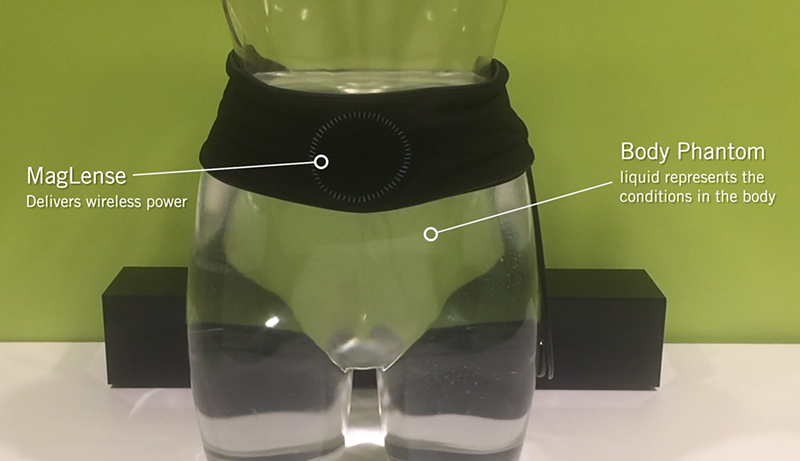In recent years, we’ve witnessed great advances in implant technology. However, as the technology is advancing in full speed, the charging solution for these devices remain inefficient and cumbersome. The patient either is required to sit still for the entire period of charging, which can take more 4 to 6 hours or if they wish to move around, it may take longer and charge at less than optimal efficiency. When the charger is worn for too long, the power being transferred from the charger through the skin can even result in thermal wounds.
Read more Tiny, Remotely Powered Electronic chip provides big improvement to treat neurological disorders
Now, product design and development firm Cambridge Consultants has come up with a novel solution to the problem. They developed a through body wireless power transfer system called MagLense, which can be a game changer in the fields of medical implants and consumer wearable devices.
The MagLense system provides safe and efficient wireless power transfer to devices inside the body without having to worry about precise alignment with the implant, the size and body shape of the patient, reports Cambridge Consultants.
The system also reduces the risk of discomfort without compromising performance and eliminates the battery from the body.
“MagLense addresses one of the ‘holy grails’ of smart implant design,” said John Genova, head of smart implant development. “Efficient, safe and targeted through-body power delivery is a critical missing component for next generation implants. Our technology enables a level of performance that opens the door for a whole new generation of implanted therapeutics.”
Fast and efficient charging paves the way to a new generation of batteryless smart implants powered wirelessly from power sources up to 50 centimeters away.
The system, which is ready for integration into devices, could usher in a new era of treatment for people suffering from conditions such as diabetes, epilepsy, obesity and depression. Using the technology, doctors can perform implants in parts of the body where implants weren’t possible before. Aside from medical implants, the system could be used in consumer wearables as well.
According to Cambridge Consultants, the flexible power delivery system conforms to different body types without wasting power. The system can self-calibrate to deliver the optimal power for different implant locations, sizes and shapes. It can also avoid heat damage to surrounding tissues by targeting only the desired implant.
Read more Scientists Create Self-healing Health Wearable Powered by Body Heat
“There are patients with different body types and different implants go in different parts of the body – we needed to come up with a technology that was agnostic to all of that,” said Dr Arun Venkatasubramanian, head of implanted connectivity at Cambridge Consultants, and one of the two-man team behind the invention of MagLense.
“Because of the clever algorithms and coil designs that went into MagLense, and the fact that it is agnostic to implant orientation and position in the body and automatically calibrates itself when patients move, patients are not restricted in their quality of life,” he added. “They don’t have to minimise movement – they can go for a jog and do all sorts of things and wear the belt and it will charge. That’s the whole purpose of why we started this.”













